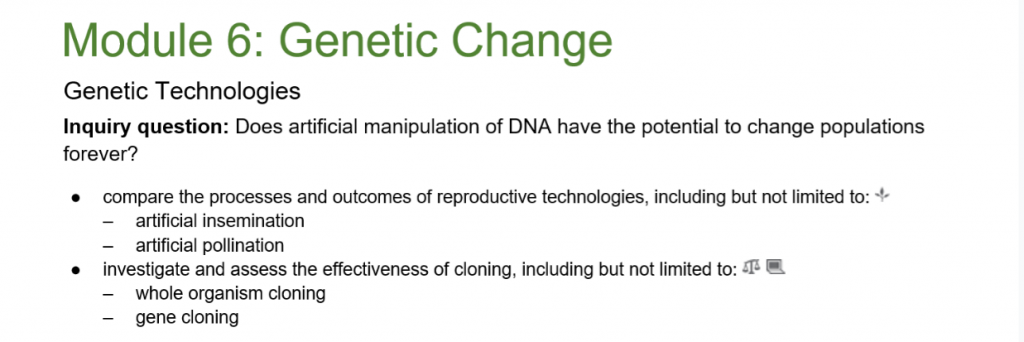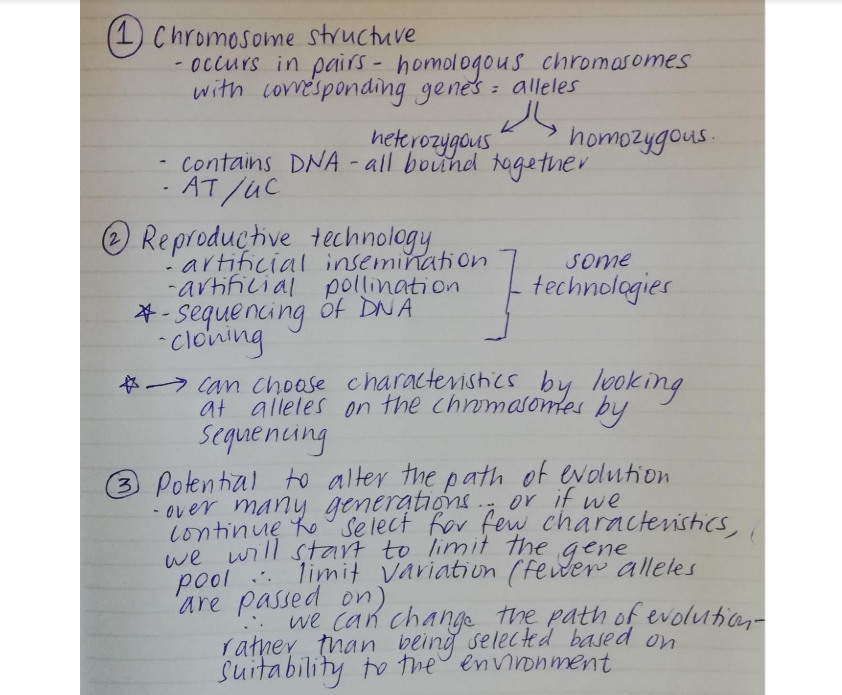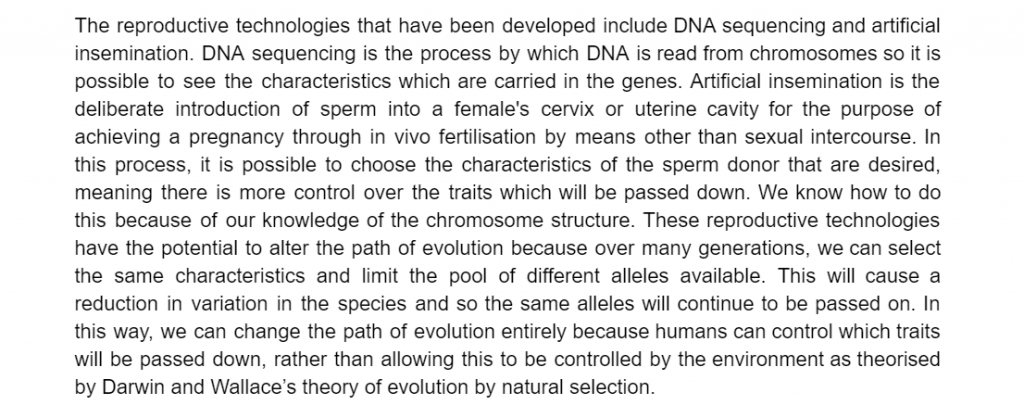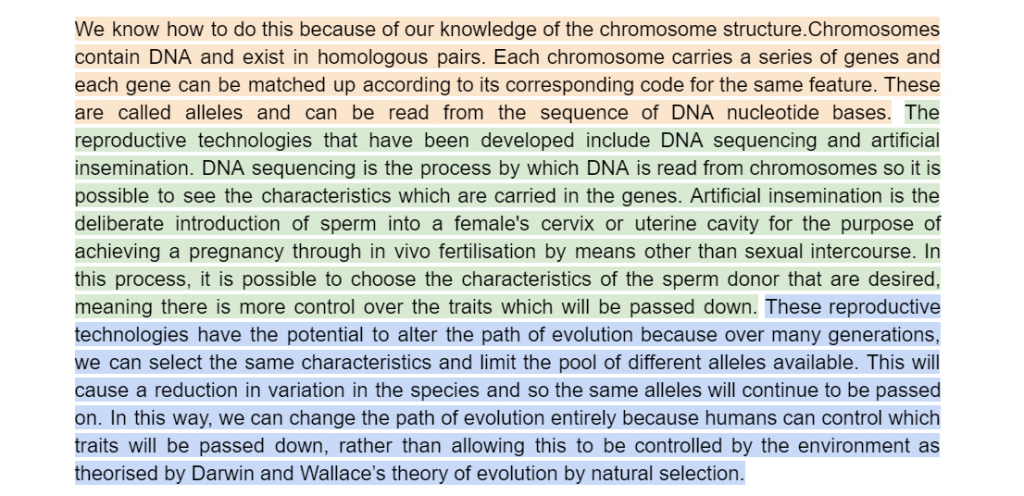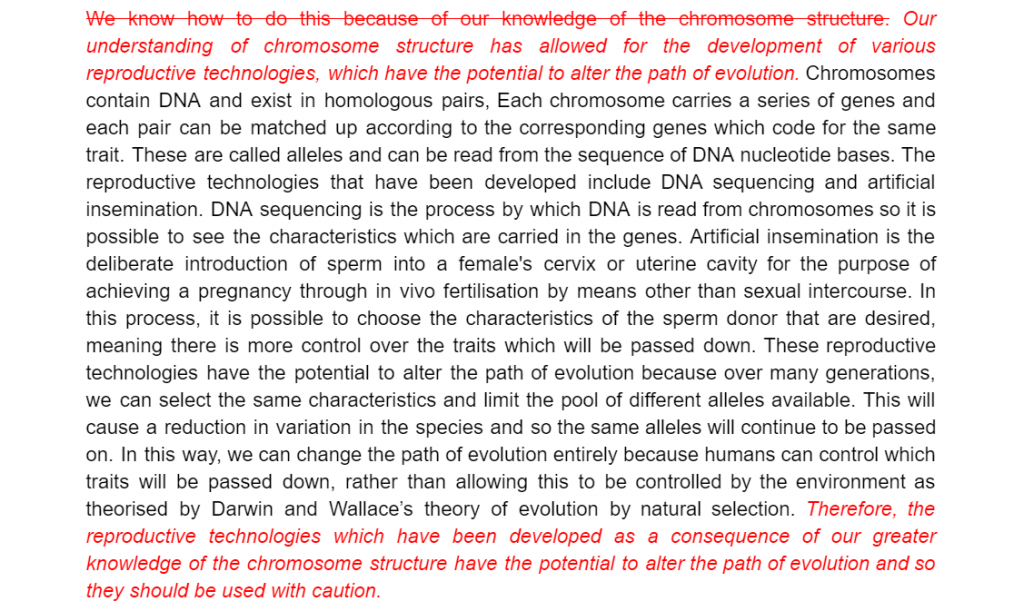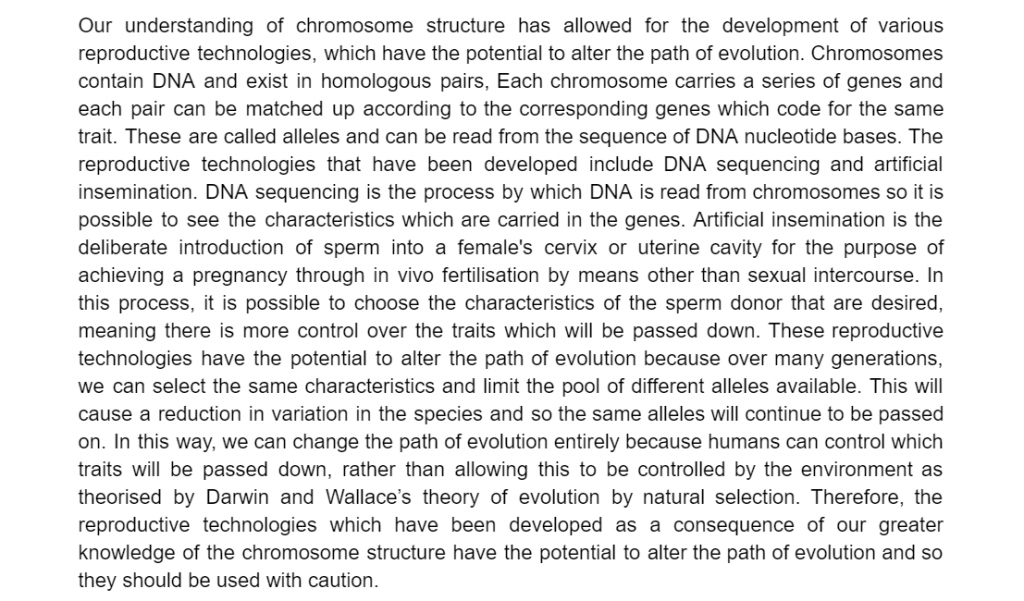Writing a HSC Biology extended response can be hard. Seriously, they’re tedious to write, it takes ages and a lot of brain power is needed.
…But what if I told you that it doesn’t have to be so tough?
You’re in luck because I’m here to help you smash out a HSC Biology extended response using some tricks.
People often struggle with extended responses because they get tripped up by the first step of breaking down the question.
For this reason, I’ve decided to place particular emphasis on two things:
- how to break down questions; and
- how to address each and every part of the question.
If all of this is starting to sound a bit foreign already, I would suggest that you hop over here for some pro tips on how to approach 5 mark questions. The advice still applies for extended response questions, with a few additional tips – as follows.
For the sake of having a concrete example for our discussion and guide, I have chosen this question from the 2013 HSC exam:
So. We’ve got an enthusiastic student and an even more enthusiastic coach. We also have an example question.
Let’s get started on our HSC Biology extended response!
Step 1: Break Down the Question and Have a Brainstorm
Step 2: Write a Draft for your HSC Biology Extended Response
Step 3: Re-Draft Your HSC Biology Extended Response
Step 1: Break Down the Question and Have a Brainstorm
Have a look at the question and underline any key words which come from the syllabus.
For example:
Each one of the different highlighted terms is a different and distinct part of the question.
Let’s take a look at the syllabus and find which parts are relevant to our question.
If you’re having trouble selecting exactly which dot points are perfect for the question, you’ll never find them. An 8 marker will usually ask you to synthesise a response from many dot points, or maybe it might ask you about little bits and pieces from some dot points.
Don’t worry if the wording isn’t exactly the same – you are focusing on the content of the dot points, not its exact wording.
For example, a question asking you about the significance of DNA replication in cells is going to be relevant to heaps of dot points in Module 5: Heredity.
Now, back to the matter at hand – which dot points are relevant to our specific question?
- This dot point refers to our knowledge of chromosome structure
- DNA in a eukaryotic cell will be intertwined around chromatids to form chromosomes
-
This dot point refers to reproductive technologies
-
We have several reproductive technologies: artificial insemination in animals and pollination in plants, and cloning which includes gene sequencing and gene technologies
- This dot point (still from Genetic Change) refers to the path of evolution
- Organisms best suited for the environment survive, reproduce and propagate their genes. We are directly affecting evolution by changing existing biodiversity
This leads us nicely to the next part – now we need to do a brainstorm to address each part of the question.
Brainstorming should always be the next part of answering your big questions as it allows you to:
-
Plan out your response so it is logical and chronological
-
You don’t forget any major points
-
When you go back to edit your response, you remember which points you wanted to write about
This isn’t meant to be perfect – keep it rough and organic!
If you feel a bit stuck and can’t remember much of the content, it’s perfectly okay to head back to your notes to brush up on your memory!
…This answer doesn’t sound very fancy.
Yeah, it does sound a little rough on the edges, but that’s the point.
So, how am I supposed to turn this into a great HSC Biology extended response?
If you’re concerned about the wording of your response, or about the content, you can circle words that sound funny and replace them with their analogous terms (“process of making mRNA” to “Transcription”).
You can also underline ideas that you don’t understand very well and create their own brainstorms. Anything to validate the accuracy of the content in your HSC Biology extended response.
Step 2: Write a Draft of Your Response
This is my favourite step because it is where a student starts to put their ideas down on paper, and their ability to think critically never fails to impress me.
Starting is the hardest part.
However, this is also the step that a lot of students fear because they’re not sure how to start – they are continually worried about using the correct words and the best phrases possible.
Note: It is perfectly okay to use the first words which pop into your head.
The function of a draft is so that you have a chance to get all of your ideas out of your head and onto the paper, in whatever form is necessary. The draft does not need to be perfect.
If anything, the worse it is, the better because you now have a starting point of where to begin to edit. Your mistakes now are only going to make your response that much better in the future.
Later on, in Step 3, we’ll get down to the nitty gritty details of how extended responses should be phrased and polished, but until then, just go for your life.
The best way to do this is to tackle each of the separate parts of the question (as we broke them down above) one at a time, and simply ‘answer’ that one section.
Here’s mine:
I’ve colour coded each of the sections of my draft according to the corresponding parts of the question to make it a bit easier for you to follow:
Step 3: Re-Draft Your Response
I would say that this is the toughest part of the process, but at the same time, it is the easiest to master, because there are only 2 simple rules.
If you follow these rules, re-drafting your answers will become infinitely easier, and you will even start to do these things unconsciously.
- Check that your answer sufficiently addresses all of the parts of the question
- Make sure that your argument flows logically
Does my answer sufficiently address all of the parts of the question?
The colour coding is really useful here because it’s possible to see how much information I have for each part of the question.
I recommend that you do this (with a highlighter if you hand-write or by typing up your answers) the first few times because it really does help to physically see how much you are writing for each part of the question.
Here’s my colour-coded first draft again:
As you might have noticed, there isn’t very much orange here in the picture – I didn’t really write enough for the first part of the question!
This becomes even more obvious when I looked back on my handwritten notes and I realised that I had actually left out a few points that I had under this first part!
Here’s what it looks like after I pop in a bit more information:
Much better! Now you can see I’ve put in enough information for each of the three parts of the question.
But does my answer flow logically?
A really good rule of thumb for this point is to follow the flow of logic in the question.
In this particular question, it is asking me to talk about:
- the knowledge of the chromosome structure that we have;
- the reproductive technologies which have been developed as a result of this knowledge; and finally
- how this has the potential to alter the direction of evolution.
This means that the most logical way to answer the question is to go through my information in the same order.
Particularly since it is impossible to explain the reproductive technologies without our understanding of the chromosome structure, and it would be even more confusing if I tried to explain the impact on evolution without explaining the reproductive technologies themselves!
This is what it looks like after a bit of shifting around:
Wonderful!
Now, to polish things off even more, do a read-through to make sure that your HSC Biology extended response reads well.
On your way through, you might want to add a nice little topic sentence and a concluding sentence to bookend your argument nicely – this will add a sleek introduction and conclusion, kind of like a mini-essay!
A great way to revise the readability of your HSC Biology extended response is to copy-paste it into google translate and have it read out the response to you. You’ll find more cracks this way.
I like to include these bookends because they provide a bit more direction for the reader so that it’s that much easier to keep up with my argument. This really prevents any minor confusion from getting in the way of your well-deserved marks!
If you’re feeling uncertain about how your HSC Biology extended response reads, get someone else to read through it!
This can be your parents, siblings, teacher or Art of Smart coach – you really just need feedback about whether it makes sense and is logical. If you’re giving it to someone who is familiar with HSC Biology, you can definitely ask them to give you some feedback about the content you included as well!
And there you have it! All done!
Our final HSC Biology extended response looks like this:
Remember that the first few times you do extended responses it’ll be hard to perfect your answer. After you’ve done it a few times, it becomes much easier, to the point where you’ll be able to write a good answer during a test or exam, when you have limited time!
The more you practice tackling extended response questions, the easier they will get!
If you’re ever feeling discouraged, take heart in the fact that I still use this strategy myself – even after so many years of study and teaching others, this is the most effective method!
Now try writing your own response!
Here’s your response checklist:
Step 1: Break down the question
Step 2: Identify relevant dot points in the syllabus
Step 3: Create an outline of your main points and break down into sub-dot points
Step 4: Create a rough outline of your response
Step 5: Refine and rearrange your response (fix up messy wording, add in an introductory and conclusion sentence at the end)
So, grab a pen and a piece of paper and try the following questions. I guarantee you that it’s going to be worth every minute if you do it now.
It’s okay if the question doesn’t fit directly into any one particular dot point. It is up to you to synthesise and extract information that you already know into a new question.
For some extended response questions, check out our master list of HSC Biology Past Papers here! You can also check out our tips to achieving a Band 6 here.
Looking for extra help with HSC Biology?
We pride ourselves on our inspirational HSC Biology Sydney tutors and mentors!
We offer tutoring and mentoring for Years K-12 in a variety of subjects, with personalised lessons conducted one-on-one in your home or at our state of the art campus in Hornsby!
To find out more and get started with an inspirational tutor and mentor get in touch today!
Give us a ring on 1300 267 888, email us at [email protected] or check us out on Facebook!





